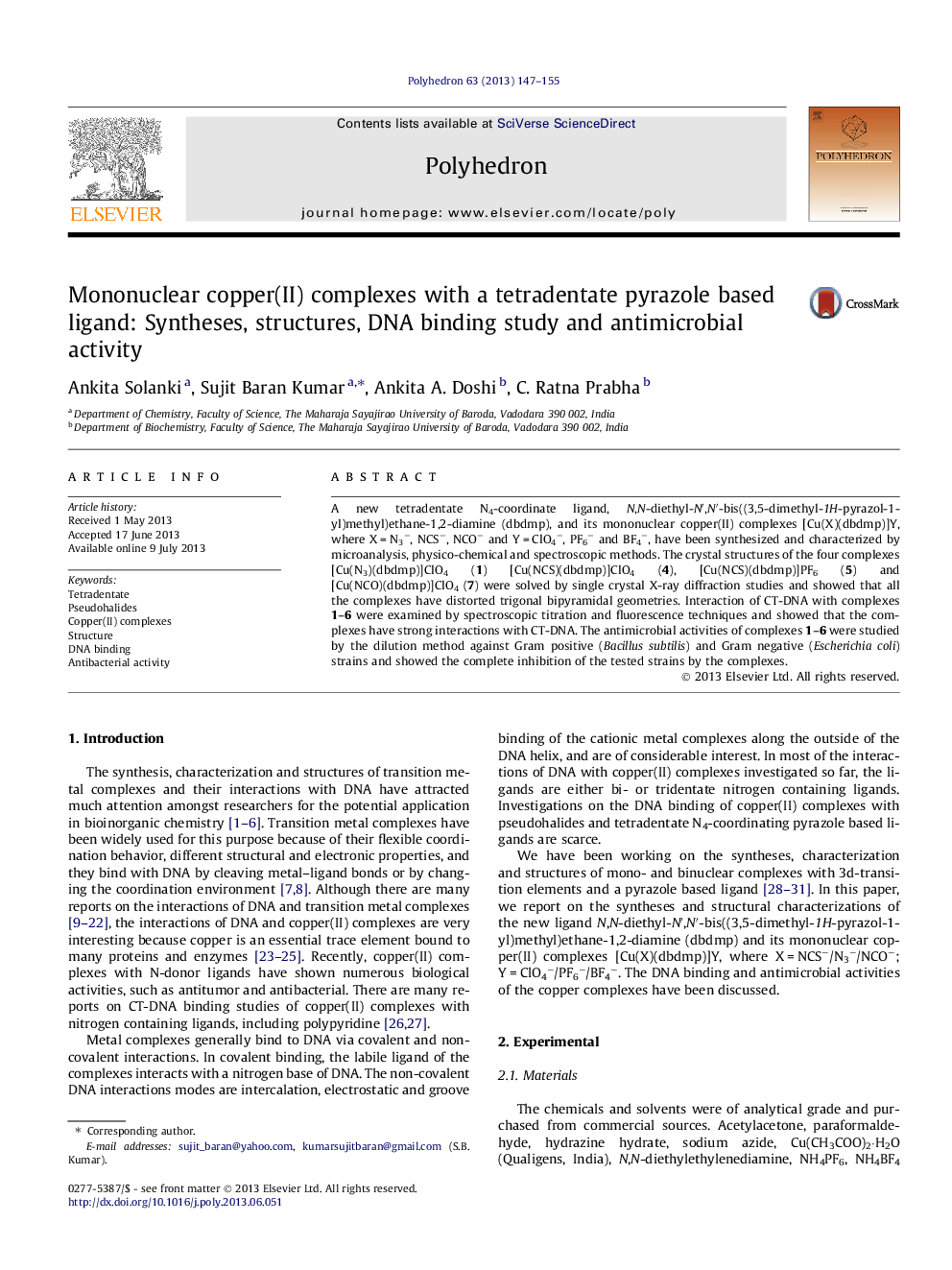| Article ID | Journal | Published Year | Pages | File Type |
|---|---|---|---|---|
| 1335569 | Polyhedron | 2013 | 9 Pages |
A new tetradentate N4-coordinate ligand, N,N-diethyl-N′,N′-bis((3,5-dimethyl-1H-pyrazol-1-yl)methyl)ethane-1,2-diamine (dbdmp), and its mononuclear copper(II) complexes [Cu(X)(dbdmp)]Y, where X = N3−, NCS−, NCO− and Y = ClO4−, PF6− and BF4−, have been synthesized and characterized by microanalysis, physico-chemical and spectroscopic methods. The crystal structures of the four complexes [Cu(N3)(dbdmp)]ClO4 (1) [Cu(NCS)(dbdmp)]ClO4 (4), [Cu(NCS)(dbdmp)]PF6 (5) and [Cu(NCO)(dbdmp)]ClO4 (7) were solved by single crystal X-ray diffraction studies and showed that all the complexes have distorted trigonal bipyramidal geometries. Interaction of CT-DNA with complexes 1–6 were examined by spectroscopic titration and fluorescence techniques and showed that the complexes have strong interactions with CT-DNA. The antimicrobial activities of complexes 1–6 were studied by the dilution method against Gram positive (Bacillus subtilis) and Gram negative (Escherichia coli) strains and showed the complete inhibition of the tested strains by the complexes.
Graphical abstractA new N4-coordinated ligand, N,N-diethyl-N′,N′-bis((3,5-dimethyl-1H-pyrazol-1-yl)methyl)ethane-1,2-diamine (dbdmp), and its mononuclear copper(II) complexes of the type [Cu(X)(dbdmp)]Y, where X = N3−/NCS−/NCO− and Y = ClO4−/PF6−/BF4−, have been synthesized and characterized. Single crystal X-ray structure determination reveals that all the complexes have distorted trigonal bipyramidal geometries. The interactions of the complexes with CT-DNA were examined with the help of absorption and fluorescence spectroscopy. An antimicrobial study of the complexes showed the complete inhibition activity of the complexes at high concentration against some microorganisms.Figure optionsDownload full-size imageDownload as PowerPoint slide
